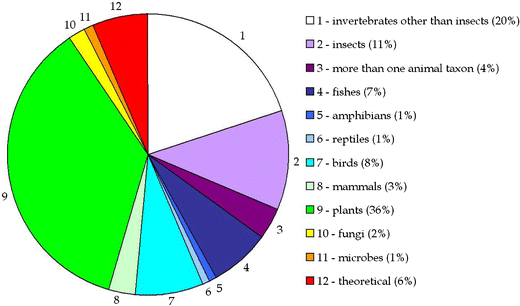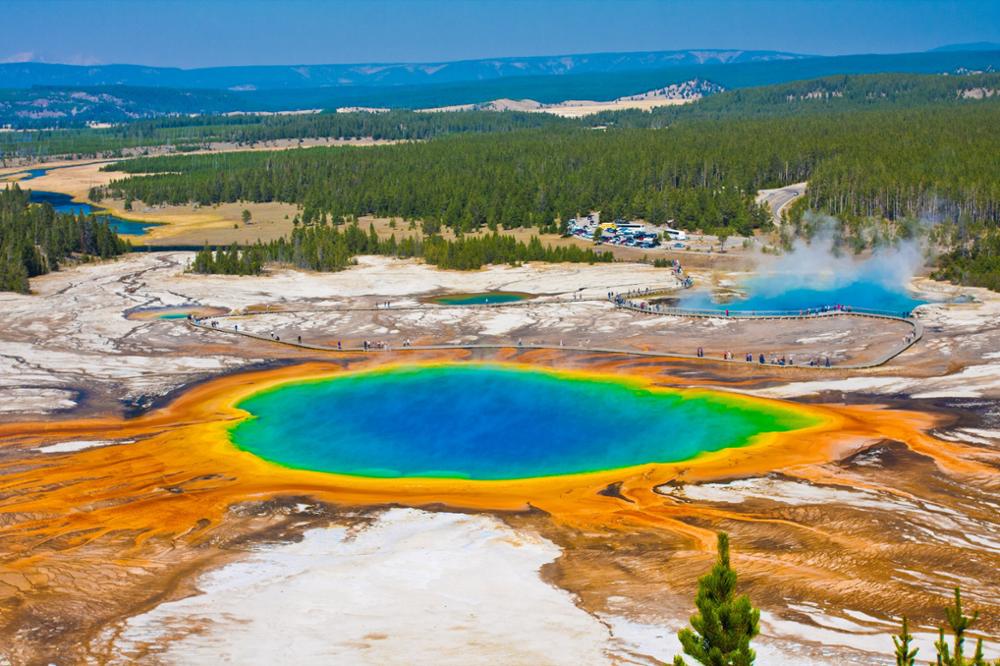The Unseen Engineers of Earth: How Fungi Forge Forest Ecosystems
Beneath the lush greenery of the world's forests, there lies a hidden kingdom, a web of life that connects the tallest trees to the smallest insects. This world, often unseen to the human eye, is ruled by a group of organisms that are neither plant nor animal but belong to a realm of their own: fungi. These diminutive engineers of the earth play a pivotal role in the health and sustenance of our planet's vast forests. Far from being mere decomposers, fungi are the unsung heroes that maintain the complex balance of these ecosystems.
Scientists have long recognized the importance of fungi in the environment, yet it is only in recent decades that we have started to comprehend the full extent of their influence. The symbiotic relationships formed between fungi and plants, known as mycorrhizal associations, are particularly fascinating. In these partnerships, fungi colonize the root systems of plants, extending their mycelium—a network of fine, thread-like structures—far out into the soil. This fungal network increases the surface area for water and nutrient absorption, greatly benefiting the host plant. In return, the plant supplies the fungi with carbohydrates produced through photosynthesis.
Around ninety percent of all plant species are believed to form mycorrhizal relationships, making it one of the most widespread and critical mutualistic interactions on Earth. These connections are so vital that they can influence plant growth, soil health, and the biodiversity of an ecosystem. They help plants to withstand stress, fight off pathogens, and effectively compete for available nutrients. In forests, the so-called 'wood wide web' enables communication and nutrient sharing between different plants, creating an interconnected community that supports the survival and prosperity of numerous species.
The role of fungi in decomposition is equally important. By breaking down dead organic matter, fungi recycle essential nutrients back into the soil. This process of decomposition not only prevents the build-up of waste but also enriches the soil, promoting new plant growth and sustaining the cycle of life within the forest. Some fungi specialize in decomposing wood, others leaf litter, yet all contribute to this nutrient recycling act.
The macroscopic manifestations of fungi—the mushrooms and toadstools that occasionally pop up on the forest floor—are the reproductive structures of these mostly hidden organisms. These sporocarps emerge to disseminate spores into the environment, part of an intricate reproductive strategy that ensures the survival and distribution of fungi across the forest landscape.
Despite their importance, fungal populations are under threat from various factors, including deforestation, climate change, and environmental pollution. The loss of forested land not only dismantles the complex fungal networks but also reduces biodiversity and disrupts ecosystem function. The situation calls for a better understanding of these organisms and the implementation of conservation strategies that recognize the integral role of fungi in forest ecosystems.
By expanding our knowledge and appreciation of the fungal kingdom, we may begin to approach forest conservation with a newfound perspective. Protecting fungi means protecting the vast networks that sustain our forests. It is a call to recognize that sometimes, the most powerful forces of nature are those that lie just beneath our feet, unobserved, yet undeniably crucial.
In the following segments, we will delve deeper into the diverse roles fungi play within forest ecosystems and discuss the current research and conservation efforts aimed at preserving these vital organisms. We'll explore the delicate balance they maintain, the challenges they face, and the steps we can take to ensure that the unseen engineers of Earth continue to thrive, supporting the complex tapestry of life that depends on them.Emerging research has revealed that the fungi kingdom hosts a multitude of species, each with unique attributes and roles within the ecosystem. Endophytic fungi, for example, live inside plant tissues, providing defense against herbivores and pathogens, while mycorrhizal fungi connect the roots of trees and plants in an intricate network that permits the sharing of nutrients and water. Such fungal communities are more than mere inhabitants of the forest; they are its architects, shaping the structure and resilience of the ecosystem.
Yet, for all their importance, fungi are frequently neglected in conservation dialogues, which tend to focus more on charismatic megafauna or photogenic flora. The reasons for this oversight may be many, including the fungi's cryptic nature and a historical bias toward what can be easily seen and counted. However, as scientists unravel the crucial role of fungi in ecosystem functionality and services, the tide is slowly turning. Conservation movements are beginning to take notice, integrating fungi into their strategies and recognizing that without these organisms, entire ecosystems may collapse.
Protecting fungal diversity is not just about preserving the species themselves but also about maintaining the services they provide. The stability of our forests, agriculture, and global food webs hinges on the health of fungal communities. In forests, decay is as important as growth, with fungi facilitating the breakdown and recycling of organic material, which renews the forest floor with nutrients essential for future growth.
Climate change ups the stakes, as shifts in temperature and precipitation patterns can drastically alter fungal communities. Some species may flourish under new conditions, while others may languish, disrupting established relationships between fungi, plants, and animals. This delicate equilibrium, honed over millions of years, is at risk of being upended, with unpredictable consequences for forest health and resilience.
Furthermore, the introduction of pollutants such as heavy metals and pesticides into forest ecosystems can have detrimental effects on fungal populations. These chemicals can disrupt the delicate mycorrhizal associations between fungi and plant roots, potentially leading to a decline in forest vitality and a loss of biodiversity. Conservationists are now recognizing that protecting the fungal networks is as critical as safeguarding the visible parts of the forest we are more familiar with.
Research also plays a key role in fungal conservation. By mapping fungal networks and understanding their dynamics, scientists can make informed recommendations for forest management. The emerging field of mycological studies has brought with it a wave of enthusiasm and curiosity, with citizen scientists and professionals alike delving into the mysteries of the fungal world.
This surge in interest has been instrumental in fostering public support for conservation initiatives. For instance, mycological societies across the globe run programs to educate people about the importance of fungi. These programs also encourage citizens to participate in fungal surveys, which contribute valuable data that could inform conservation efforts.
Efforts are underway to protect larger tracts of forest land, which, by default, conserves the fungal communities within them. However, a targeted approach is essential too. Conservation strategies must ensure that the myriad microhabitats fungi require are preserved, from rotting wood to leaf litter layers to the varied soil types that different species inhabit.
Agreements like the Convention on Biological Diversity now include fungi in their strategies, acknowledging that conserving biodiversity is about safeguarding all life forms, including the fungal networks that underpin the health of the planet's ecosystems. It's an evolving recognition that the key to a thriving natural world lies hidden in plain sight, within the complex and dynamic world of fungi.
As we look to the future of conservation, protecting this unseen kingdom calls for a collaboration between scientists, conservationists, policy-makers, and the public. It involves education, research, and the passage of policies that recognize the fundamental importance of fungi. Through combined efforts, we can ensure the preservation of the fungal networks that support the diversity of life in our forests and beyond.
In conclusion, while they may often evade our attention, fungi are the silent orchestrators of earthly biomes, underpinning ecosystems' health and sustainability. The future of our natural world is inextricably linked to the fate of these extraordinary organisms. As we continue to unravel their secrets, we must also commit to their protection, ensuring that these unseen engineers continue to thrive, breathing life into the soils of our planet's vast and varied forests.






;Composite=(type=URL,url=https://images.radio-canada.ca/v1/assets/elements/16x9/outdated-content-2020.png),gravity=SouthEast,placement=Over,location=(0,0),scale=1)









Comments